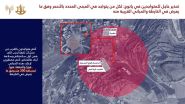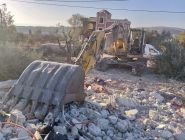
Weakened by Israeli raids that have decimated its leadership, Hezbollah now faces an unprecedented crisis. The exodus of one million Shiite civilians, its primary support base, is upending the fragile sectarian balance in Lebanon and putting immense pressure on an already strained social fabric. Confronted with significant humanitarian, security, and organizational challenges, the pro-Iranian movement stands at a critical crossroads. Its path — oscillating between withdrawal and radicalization — will have far-reaching implications for Lebanon’s future and for regional and international stability.
The sudden and massive exodus of around one million people, primarily from the Shiite community, following the intense bombardment of villages in southern Lebanon and daily strikes on Hezbollah's stronghold in the southern suburb of Beirut in the wake of the attack on the group's high command, marks a major turning point in Lebanon's tumultuous history. This mass displacement of people, unprecedented since the end of the civil war in 1990, carries significant implications for the country's already fragile sectarian balance.
From a demographic and social standpoint, the exodus from Hezbollah's traditional support base is likely to significantly reshape Lebanon’s communal landscape. The influx of Shiite refugees into areas that have previously been predominantly Sunni or Christian, such as northern Lebanon or the Beqaa Valley, could permanently disrupt local balances. This forced reconfiguration of the Lebanese social fabric carries inherent risks. In a country where sectarian identity is the primary marker of belonging and the cornerstone of the political system, such a shift in demographics could exacerbate intercommunal tensions.
This displacement could enable Hezbollah to expand its influence into areas that were previously beyond its reach. By establishing a presence among the displaced, the movement could recruit new supporters and enhance its networks in predominantly Sunni or Christian regions.
Overwhelmed NGOs and an Absent State
Managing the hundreds of thousands of displaced Shiaa poses a colossal humanitarian and economic challenge for Lebanon, which is already facing an unprecedented crisis. The country’s infrastructure and public services, heavily affected by years of mismanagement and underinvestment, are on the verge of collapse.
In this context, local NGOs, along with numerous private initiatives, are mainly attempting to address the state’s shortcomings in providing essential support to refugees, including food, makeshift shelters, and access to healthcare. This is a monumental task, given the immense needs and limited resources available.
Severely impacted by Israeli airstrikes that have devastated its ranks and leadership, Hezbollah is currently in a period of retreat and reorganization. Weakened both militarily and politically, it can no longer mobilize its usual philanthropic networks to help the displaced.
Between Explosion and Drifts
Hezbollah is currently facing a major organizational crisis following the elimination of its key leaders by Israel. This near decapitation of the movement has exposed the fragility of its hierarchical and hyper-centralized structure, where everything relies on a small core decision-making group.
To survive, Hezbollah may indeed be tempted to adopt a more decentralized approach, granting greater autonomy to its mid-level ranks and local units. Such a shift would primarily be a pragmatic response aimed at mitigating the impact of targeted strikes by the Israeli Army.
However, it would be misguided to see this potential reorganization as a fundamental challenge to Hezbollah's ideology and methods. A more horizontal structure would not necessarily translate into greater transparency or moderation from the pro-Iranian group. In fact, it could pave the way for the rise of more radical and harder-to-control factions within the movement.
By diluting its command structure, Hezbollah risks losing strategic coherence and scattering its forces. Coordinating complex operations, which the movement has successfully executed in the past, would become increasingly difficult. Ultimately, such decentralization could paradoxically weaken Hezbollah rather than strengthen it. It is therefore essential not to overinterpret this possible organizational evolution. It would not represent a “normalization” of Hezbollah but rather a tactical adaptation aimed at ensuring the survival of a movement fundamentally hostile to the interests and values of Western democracies.
The Threat of Terrorism
This decentralization also poses significant risks. By losing control over its ranks, the group's leadership may witness certain factions radicalize, similarly to jihadist groups in Iraq or Syria. Unsupervised and free from Tehran's influence, a “Hezbollah 2.0” could be inclined to adopt a much more hard-line approach and resort to terrorist tactics, both within Lebanon and at the international level.
The possibility of Hezbollah, or some of its members, turning into a “Shiaa ISIS” cannot be overlooked. Armed with military experience and deeply embedded within the population, radicalized factions could significantly destabilize Lebanon's fragile structure by escalating attacks against other communities. Furthermore, their capacity for disruption would extend beyond Lebanon. With a strong presence in the Shiaa diaspora, particularly in Africa and Latin America, Hezbollah has networks that could be motivated to take action against Israeli or Western interests.
Although this worst-case scenario remains hypothetical, it warrants serious attention. Hezbollah has already shown its capacity to operate far from its bases. The emergence of groups like Al-Qaeda and the Islamic State has proven that seasoned terrorist organizations can quickly emerge from the remnants of weakened or dismantled structures.
Hezbollah: Decapitated Yet Violent
The issue of disarming Hezbollah, crucial for Lebanon's future, now seems more distant than ever. Only Israel, through its military offensive, appears able to enforce the implementation of UN Security Council Resolution 1559, which calls for the disarmament of all Lebanese militias. Hezbollah remains the only group that has not been disarmed.
Given this situation, the international community, despite its calls for restraint, seems to be giving tacit approval to Israel to “get the job done” not only in Lebanon but also against all Iranian proxies in the Middle East. The United States asserts its full support for the Hebrew state, while other Western countries, such as France and the United Kingdom, offer more measured backing by deploying military resources to the region and reaffirming their commitment to Israel's security.
Albeit discreet, some Arab states are also providing indirect support. For example, Qatar has funded the salaries of Lebanese military personnel to enhance the Army's capabilities against Hezbollah, while other countries have offered material assistance. Meanwhile, the European Union strongly condemns Iranian attacks against Israel while calling for an immediate ceasefire.
In this context, expecting Hezbollah to willingly disarm would be unrealistic. Even though it has been weakened by Israeli strikes and abandoned by its Iranian sponsor, Hezbollah remains fiercely dedicated to its military wing, viewing it as crucial to its survival and influence. Only a total capitulation, which still appears remote, could prompt the Shiite group to seriously consider disarmament and convert itself into a purely political party.
At this point, Hezbollah stands at a historic crossroads. Weakened but still standing, the group must make crucial decisions about its future and that of Lebanon. However, it would be naïve to believe that these choices will lean toward moderation and compromise. Even when cornered, Hezbollah remains a fundamentally radical movement that will not easily forsake violence as a means of political action.
Read more





Comments